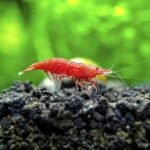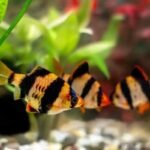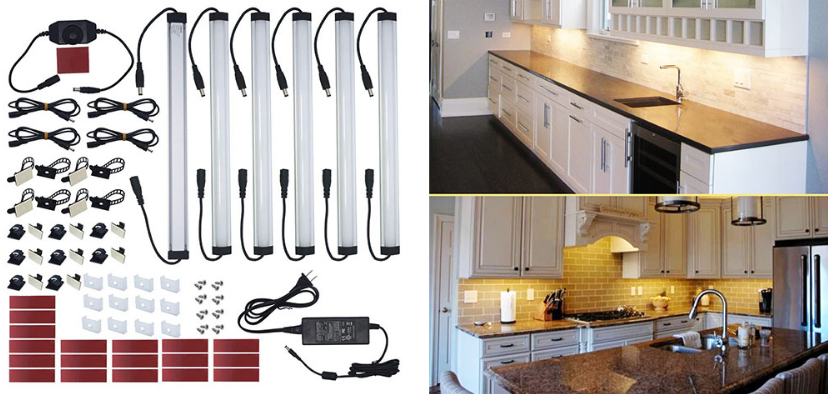Koi fish is a popular ornamental fish around the world. When you think You should ideally keep these animals in carp ponds, they become inaccessible to any fishkeeper. Its maintenance in domestic aquariums requires giant tanks, periodic maintenance, and a high-quality filter. A tranquil pond filled with colorful carp brings charm to a backyard. And a large aquarium with Kois is overwhelming in any environment. Here we provided Koi in fish tank guide (Lifespan, Tank Mates, Diet, & Health).
Everything you need to know about Koi fishes
Koi fish can be up to 3 feet long, which is more significant than other aquarium fish. The female Koi fish is larger than the male and has a more circular body. They’re like vacuum cleaners constantly rummaging through the substrate for food. They have different types of colors and shapes, being highly ornamental animals. When trying to find food, they can dig up sediment, which can disturb your aquatic plants.

Can a Koi fish live in a tank?
Yes, the fishes may live indoors in either a fish tank or water tank. They are attractive and can be central parts of any room or office. In tanks, you can enjoy them year-round regardless of the outdoor condition. Also, people with Koi ponds have to keep the fish indoors when there’s a problem with the pond: the winter is heaviest, one is sick, or a newcomer is in quarantine. This means that they can keep an eye on their well-being and continue developing during average dormant winters. It offers an advantage to keeping Koi in a tank rather than a pond.
Why can’t it always be permanent?
Unfortunately, Koi fish grow a lot in the first years. Even as a baby, they will be outgrowing their tank by about a year. For these reasons, most people who tried indoor tanks either expanded to the outdoors or stopped altogether because house Koi also required more care and lots of space.
Can other fish live with Koi in a tank?
Koi fish can live well with some species of fish but prefer to be among the same species. Choose calm tank mates that don’t pinch fins and can’t be eaten by Koi. Keep common sense about overcrowding and provide enough space for everyone.
Feeding Koi Fish In A Tank
Feeding Koi fish in a fish pond is no different than feeding Koi fish in a pond. Carp can eat other foods and benefit from varied diets. Some of the foods consumed by Koi fish include commercial food for Koi and fresh vegetables. As a staple food, offer high-quality commercial Koi rations. That way, your pet will receive all the nutrition it needs to stay healthy and vibrant in color.
Breeding Koi Fish
Koi fish produce thousands of embryos upon spawning; even with the high hatch rate, only a few will be selected as high standard Koi to be broodmares. Fish typically spawn when water temperatures are 65° to 70°F. In outdoor ponds, this usually happens in late spring or early summer. Before spawning day, you will notice one or more males showing interest and harassing the female; the male closely follows her around the pond for a day or two. Spawning usually starts early in the morning, with males aggressively chasing and prodding the female.
General behavior
Most Koi fish are friendly and do not harass other fish. They are curious fish; they may even come to you when you appear near the tank if they feel comfortable.
Interesting facts
A surprising fact is that Koi fish are known for jumping. In these jumps, the fish may jump out of the water, so the fishkeeper must place a reinforced cover to hold the strength and size of the Koi.
Koi are friendly and can eat from your hands.
When they are comfortable in their home, they can eat directly from their hands. They can be ideal indoor companions and ornaments.
Room to Thrive
An aquarium will never be the ideal accommodation solution for Koi. Overcrowded environments cause severe problems for Koi because of the accumulation of toxic nitrogen. Before long, you can use an aquarium as a temporary tank for an adult Koi, or you can house Koi in aquariums when babies are less than 6 inches long. Still, they prefer to live with other Koi of their kind in a tank with lots of space.
Benefits of Keeping Koi in Aquarium Tank
There are some benefits to using an aquarium to keep Koi. For those who live in an apartment, it may be the only option available to keep carp and not having problems with the hibernation of animals by being able to control the water temperature. Learn our tips and enjoy this hobby!
How do I set up an aquarium for Koi fish?
Koi fish are considered to be very active species. Koi are busy day and night, always swimming and turning the substrate for food. Your aquarium should be as large as possible, with a great filtering system correctly sized and cycled. The substrate must be soft and rounded; avoid small stones that can choke the fish. A heater to keep the temperature constant and have maintenance scheduled and your test kit at hand.
How many Koi can be kept in an aquarium?
Never overpopulate your aquarium. The number of individuals to be kept is relative to the volume of your aquarium; use common sense and water testing to see if something is out of balance. The more Koi there are, the greater the chance of problems with your system.
Koi Fish Minimum Tank Size
It’s okay to determine if you want to place Koi in an aquarium or a pond. A koi fish can grow to 3 feet in length! Even domestic Koi of common genetics can rise to this size. The growth of carp and most other fish are genetically self-determined by the parents within the limits of the species. Local koi clubs are an excellent option to relocate your Koi if a pond is out of reach. Maintain good filtrations and frequent water changes.
Koi fish tank size
A proper tank should have a minimum of 1000 gallons of water to allow healthy Koi for a long time. Carp are usually kept in indoor or outdoor ponds larger than ponds as they can be huge.
Buy and start your Koi fish aquarium
Juvenile Koi are perfect for keeping in aquariums because of their small size. They easily fit into smaller spaces, at least for a while. Set up an aquarium as long and wide as possible with all the necessary equipment to support the animals’ lives. Please make sure you cycle it first.
Koi Tank Setup
Set up the tank in an area that provides a good viewing angle but not in a room with heavy traffic of people and things. It is also crucial that the tank is placed so that the fish are not startled and cannot be bumped or knocked. It is also essential to ensure that it is set out of direct sunlight.
Koi water conditions
Koi fish can survive in most climates, but they don’t like sudden fluctuations in temperature. The water needs to be stabilized, ensuring it is well filtered to avoid pollution and eliminate waste. Keeping fish indoors in a well-ventilated and protected place is a good practice against the sun and drafts. Check the pH and ammonia in your carp tank regularly.
Temperature of water
Unlike tropical fish, Koi prefer milder waters between 65 and 75 degrees F, use a heater to keep the temperature constant; This keeps the fish’s metabolism stable year-round, regardless of the outside temperature.
Set the optimum temperature and pH
The ideal water temperature level for Koi fish is typically around 70 Fahrenheit. To keep the temperature constant and stable, it is advisable to place a heater inside the aquarium. Otherwise, unstable parameters may compromise your Koi’s health due to parameter fluctuations. Keep your pH tending towards alkaline between 7 and 8.5, consistently stable.
Decorations
Koi are found either by turning over the substrate at the bottom of the water column or swimming on the water’s surface. Beware of sharp or hard textured decorations as they can hurt your fish. Koi need a lot of open space for swimming; wisely choose decorations that don’t get in the way of the animals’ free area. Use soft substrates such as fine sand, beware of gravel that Koi could swallow; Koi like to have a thin layer at the bottom of the substrate, through which they can sift to the surface of the water.
Plants as decor
Adding plants into a Koi tank isn’t the best idea as the fish dig deep and eat the plants. You can always add fake plants; it is the best option with Koi.
Koi Fish Feeding Habits
Feed the Koi an amount that will be consumed in a few minutes, leaving no leftovers. They eat more when the water temperature is at its highest. Generally, Koi present themselves as voracious fish that readily accept various types of snacks. Daily, you can use high-quality commercial food specific to your type of Koi. Do not overfeed; in addition to water quality degradation, your fish can become obese. They are fish that eat everything, regularly offer fresh or bleached vegetables.
Common diseases to look out for
If your fish has unusual swimming patterns, abdominal bloating, corroded or inflamed, or discolored fins, this is a warning sign. Anchor worms are white fibrous worms that attach to fish, resulting in small white spots and unusual swimming behaviors; they are a relatively common parasite on Koi. Fin rot is a common bacterial infection that causes changes in the behavior or inflammation of the fins, which causes some of the fins to fray. Dropsy is created by bacterial or associated conditions, making the belly swollen, the eye cloudy, and the scales raised. Pop-eye, like dropsy, is indirectly a result of poor water quality and must be subjected to veterinary treatment.
Conclusion
Koi in a fish aquarium tank is viable as long as you have a giant tack with a great filtering system correctly sized. Koi are big eaters and their waste, in turn, is enormous. Clean gravel and maintain with water change twice a week or as often as necessary. Check the water parameters to ensure ammonia, temperature, pH, and everything else are in the correct range. Watch out for quick changes in parameters. If you keep doing all these steps, your Koi in fish tank will be the perfect environment for them. Let me know if you have any questions!





![[2023 Latest] The Best RO DI System For Reef Tank, Saltwater Aquarium [2023 Latest] The Best RO DI System For Reef Tank, Saltwater Aquarium](https://aquariumhunter.com/wp-content/uploads/2021/02/ro-system-for-aquarium.png)

